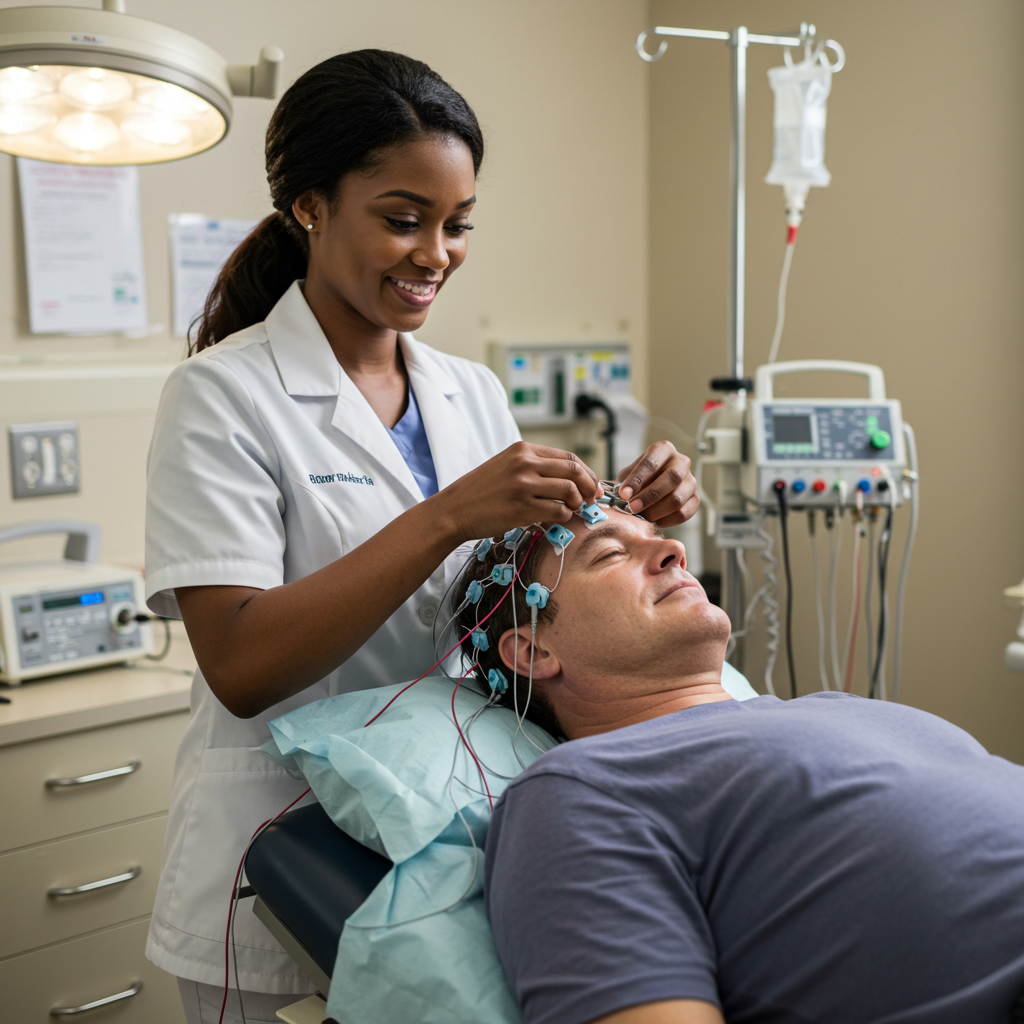
Neurofeedback: Miracle Cure or Costly Rabbit Hole? A Critical Look at the Evidence for Depression and ADHD
Neurofeedback, a non-invasive brain training technique, has garnered significant attention for its promise to alleviate symptoms of various neurological and psychiatric conditions, including depression and Attention-Deficit/Hyperactivity Disorder (ADHD). Proponents often present it as a drug-free, long-term solution by teaching individuals to self-regulate their brainwave activity. However, a closer look at the scientific literature reveals a more nuanced picture, with limited and often inconsistent evidence supporting its widespread effectiveness for these complex conditions.
The Theory Behind Neurofeedback
At its core, neurofeedback operates on the principles of operant conditioning. Electrodes placed on the scalp measure brainwave activity (EEG). This real-time information is then fed back to the individual, typically through visual or auditory cues. The goal is to train the brain to produce more of desired brainwave patterns (e.g., faster beta waves for focus) and less of undesired patterns (e.g., slower theta waves associated with inattention). The idea is that by repeatedly rewarding desired brain states, the brain learns to maintain these patterns, leading to lasting symptom improvements.
Neurofeedback for ADHD: Mixed Signals
ADHD is one of the most commonly studied conditions in neurofeedback research, with protocols often targeting the theta/beta ratio (TBR), sensorimotor rhythm (SMR), and slow cortical potentials (SCP). While some studies and meta-analyses have reported positive outcomes, particularly when based on parent ratings, the evidence becomes less compelling when more rigorous methodologies are applied.
A significant critique revolves around the issue of blinding. Many studies rely on "unblinded" assessments, where both parents and clinicians are aware of whether a child is receiving neurofeedback. This can introduce significant placebo effects and expectancy biases. When "probably blinded" assessments, such as those from teachers, are considered, the reported effects often diminish or become non-significant.
For instance, a meta-analysis by Sonuga-Barke et al. (2013) found a significant standardized mean difference for neurofeedback when using "most proximal" assessments (often parent ratings) but only a trend for "probably blinded" assessments. They concluded that "further neurofeedback trials with probably blinded assessments were necessary before this treatment can be recommended for core ADHD symptoms" (Sonuga-Barke et al., 2013).
Another meta-analysis, while claiming results in favor of efficacy, particularly for inattention, also acknowledges that "other authors... express their reservations, asking for further evidence from blind assessment" (Micoulaud-Franchi et al., 2019). Critiques often highlight methodological flaws in studies that claim strong efficacy, such as inadequate control groups, small sample sizes, and a lack of standardized protocols, making it difficult to draw definitive conclusions. Some researchers even argue that many sham-controlled neurofeedback trials fail to adequately demonstrate actual learning of brain self-modulation, potentially undermining the very premise of the treatment (Cannon et al., 2018).
Neurofeedback for Depression: A Developing Picture
Research into neurofeedback for depression is less extensive and similarly faces methodological challenges. Some studies suggest a reduction in depressive symptoms, often by targeting frontal alpha asymmetry, where an imbalance in alpha brainwaves between the left and right prefrontal cortex is observed in depression.
A meta-analysis by Mennella et al. (2021) concluded that neurofeedback resulted in a "large decrease in depression," suggesting it could be a standalone therapy or a complement to pharmacological treatment. However, many of the studies included in such meta-analyses are pilot studies, open-label trials, or lack robust control groups. For example, an open-label prospective study by Choi et al. (2015) reported significant improvements in depressive symptoms but acknowledged limitations such as a small sample size and the absence of a control group.
The presence of significant placebo effects in depression treatment is well-documented, making it crucial for neurofeedback studies to employ rigorous blinding and active control conditions to truly ascertain specific efficacy beyond non-specific treatment factors like therapist attention and patient expectation. Many studies have yet to meet this high bar consistently.
The Need for Rigorous Research
The enthusiasm surrounding neurofeedback is understandable, given the desire for non-pharmacological interventions. However, for neurofeedback to gain widespread acceptance as an evidence-based treatment for depression and ADHD, the field requires more:
- Large-scale, Randomized Controlled Trials (RCTs): Studies with sufficient statistical power and proper randomization are essential to minimize bias.
- Active Control Groups and Blinding: Comparing neurofeedback to credible sham treatments or established therapies with adequate blinding is crucial to differentiate specific effects from placebo or non-specific factors.
- Standardized Protocols: The wide variety of neurofeedback protocols and individualized approaches makes it difficult to replicate findings and build a cumulative body of evidence. More standardization in training protocols is needed.
- Long-Term Follow-up: Most studies provide only short-term outcomes. Long-term follow-up is necessary to determine if any observed benefits are sustained.
- Identification of Responders: It's possible that neurofeedback is effective for only a subset of individuals. Future research should aim to identify biomarkers or characteristics that predict who might respond best to this intervention.
Conclusion
While neurofeedback holds fascinating theoretical potential for modulating brain activity, the current scientific evidence for its effectiveness in treating conditions like depression and ADHD remains limited and inconclusive. Many studies suffer from methodological weaknesses that make it challenging to separate genuine therapeutic effects from placebo responses or other non-specific factors.
For individuals considering neurofeedback, it's vital to have realistic expectations and to discuss the available evidence with a qualified healthcare professional. While some may report personal benefits, it's crucial to acknowledge that the robust, high-quality research demonstrating consistent and specific efficacy, particularly when compared to well-established treatments, is still largely in its infancy. Further rigorous research is needed before neurofeedback can be definitively labeled a miracle cure for "whatever ails you."

